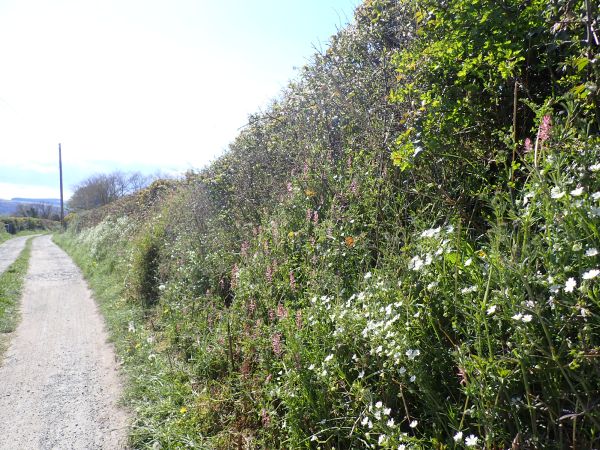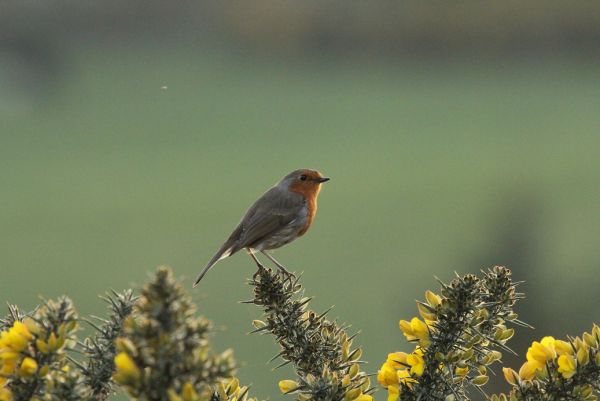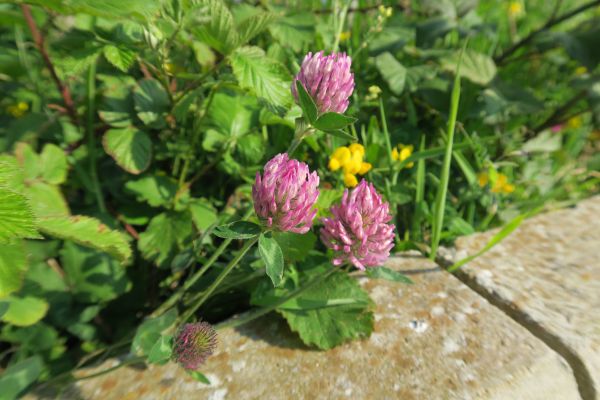Hedges – what are your responsibilities and why it’s important for our UNESCO Biosphere that you comply.
1st March to 31st August each year is the core period for nesting birds, when the countryside is awakening in a riot of colours, the days are longer and the weather milder (most of the time).
All wild birds, their nests, eggs and chicks are legally protected against damage or destruction and many bird species nest within hedges, so where possible, people are recommended to avoid cutting hedgerows during the main nesting season, or if it’s really required, to be mindful about how much is cut.
It is not illegal to cut hedges and other vegetation during this season; but it is an offence to recklessly or intentionally damage or destroy wild bird, their nests, eggs or chicks. This means that thorough checks for nesting birds must always be made before cutting begins.

Hedge at Regaby (Sophie Costain)
As well as the potential for direct damage and destruction from cutting, removing the vegetation from around nests can expose eggs or chicks to predators and make it more likely that the adults will abandon their nests.
Major cutting work, including general maintenance, is encouraged in the autumn and winter months instead.
Some cutting may still be necessary in the summer, such as for the maintenance of visibility and accessibility along our roads, for legitimate health and safety reasons. However, thorough checks should still be made. Cutting without checks would be considered reckless.
We also recommend that only the section of hedge causing a health and safety concern is cut, leave the rest alone. You may not need to cut the whole hedge.
Prior to cutting:
The following considerations should always be made:
Do I need to cut my hedge now or can it wait until autumn or winter?
Can I make do with a small trim using hand tools, rather than cutting with machinery?
If I need to cut, have I undertaken the appropriate checks?
If nesting birds are found or suspected then that section of hedge should be left well-alone.
On the Isle of Man, the legislation covering the protection of wild birds is the Wildlife Act 1990, which can be downloaded here.
What are adequate checks?
Birds are often disturbed by loud noises and the presence of people, so are discouraged from returning to active nests, so turn off machinery, walk the length of the hedge and then stand well back and observe.
Can you actually see a nest?
Do you see a bird repeatedly leaving and returning to the same spot?
Do you see a bird flying into a hedge with nesting material (twigs, grass clippings, moss etc.) or with food in its beak?
Do you hear a bird make loud agitated noises from a section of hedge when you, or anything else, comes near?
These are all signs that nesting birds are present and therefore this section of hedge should not be cut.

Not all birds are as easy to spot as this Robin (Dr Peter Duncan)
When females are incubating their eggs, they rarely leave the nest and are very difficult to spot, they may also keep very quiet. Many nests are low in the hedge or even on the ground where people don’t think to check. If there is thick foliage on the hedge, such as dense gorse, it is unlikely you will detect a nest even when looking for it.
If you are in any doubt, please do not cut.
Where do birds nest?
Birds nest in various places within hedges, including trees within hedges, so checks should be made in a variety of places. This table contains some examples of bird species that nest in and around hedges in the Isle of Man.
Not just nesting birds:
Our hedges, sod banks and verges are not just important for nesting birds. Looking after these habitats is essential for the conservation of a multitude of wild animals and plants, and for a healthy, vibrant island Biosphere.
Our hedges, sod banks and verges:
Provide safe corridors for our wildlife to move around the Island; they are often some of the only remaining areas of semi-natural habitat in towns, villages and agricultural land;
Are home to a variety of insects, including natural predators of crop pests;
Are a vital source of nectar for our pollinator species;
Contain an abundance of native wildflowers including some legally protected species such as orchids;

Red clover (Sophie Costain)
Are an important source of wild animal food throughout the year - containing berries, fruits, insects and leaves;
Provide feeding, sheltering, basking and breeding sites for legally protected viviparous lizards, and foraging and sheltering habitat for protected common frogs;
Can contain mature trees with cracks, crevices and hollows suitable for roosting bats;
Provide ecosystem services including carbon storage and sequestration, erosion and water control, wind reduction and pollution reduction;
Are an intrinsic and beautiful part of the Manx landscape, which contribute to the health and wellbeing of the entire Island population.
How can you manage hedges, verges and sod banks for the benefit of wildlife?
This document advises some good management practices.
If you have queries about hedges and hedge-cutting, email the Ecosystem Policy Team at DEFA via ecopolicy@gov.im or ring 01624 651577.
Main image: Dr Peter Duncan


